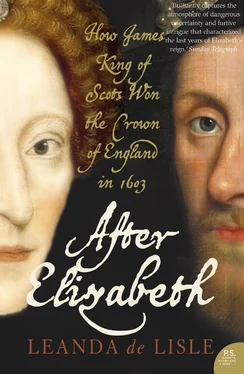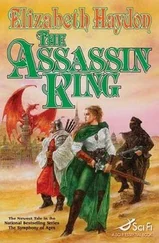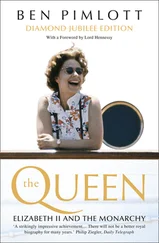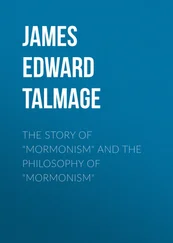As Elizabeth’s health deteriorated Northumberland offered James a detailed analysis on how toleration would help achieve a bloodless and successful accession. According to Northumberland, there were two outstanding questions that concerned James’s supporters: ‘Would he succeed peacefully without opposition?’ and ‘Would he invade England and try and seize the crown before Elizabeth was dead?’
Northumberland explained to James that widespread fear of a Scots invasion sprang from the knowledge that the Scots had invaded England in the past, that they had many allies amongst England’s traditional enemies and that England was vulnerable. Large numbers of her military men were employed in Ireland, in the Netherlands and on the high seas, while in England itself, ‘all men are discontented in general [and] … look rather for the sun rising than after the sun setting’. In his Tract to the King Harington had suggested that things were so bad a Scots invasion might succeed, but Northumberland warned James that even if it did, a small country like Scotland would never be able to maintain its domination of its richer southern neighbour. It would be best for James to wait for nature to take its course with Elizabeth for ‘it is most certain young bodies may die, but old ones must out of necessity’. 70 Once Elizabeth was dead, Northumberland was certain James’s cause would prove a powerful one:
When we look into your competitors at home we find the eyes of the world, neither of the great ones nor the small ones, cast towards them, for either in their worth they are contemptible, or not liked for their sex, wishing no more Queens, fearing we shall never enjoy another like to this. 71
Northumberland acknowledged, however, that James’s candidature had two obvious problems. The first was that he was Scots. He warned – as Harington had – that ‘the better sort’ feared James might give public office to the Scots while ordinary people found ‘the name of Scots is harsh in the ears’. He advised therefore that James enter England as an Englishman; if he succeeded in keeping ‘the better sort’ happy ordinary people would also accept him ‘and the memories of the ancient wounds between England and Scotland will be cancelled’. 72
The second potential source of serious opposition James might face, Northumberland wrote, was from the Catholic population. Harington had told James that ‘a great part of the realm, what with commiseration of their oppression, and what with the known abuses in our own church and government, do grow cold in religion and in the service of both God and prince’. 73 Northumberland confirmed ‘their faction is strong, their increase is daily’. Indeed so many young men were being drawn to the Catholic seminaries on the Continent that there were now too many English priests to be supported at home. The numbers of converts were also growing and were found even in the families of the most bitter enemies of Catholicism: Leicester’s son became a Catholic, as would Walsing-ham’s daughter, while the children of recusant-hunting bishops such as the Bishop of Durham, Tobie Matthew and John Thornborough had already done so. 74 Northumberland admitted that ‘the purer sort’ of these Catholics – those influenced by the Jesuits – preferred the candidature of the Infanta Isabella to that of James. ‘I will dare say no more,’ Northumberland concluded, ‘but it were a pity to lose so good a kingdom for not tolerating a mass in a corner.’ 75 The unspoken advice was clear enough: the moderates needed to be encouraged – but James already knew that well enough.
The English Jesuits, led by their Principal, the Somerset-born Robert Persons, were the most determined and dangerous opponents of James’s succession. They had been behind the Doleman book on the succession and in February 1601 they had persuaded Philip III to promote the candidature of the Infanta Isabella despite her own opposition to it.
Three main issues governed the Spanish Council’s outlook in matters of foreign policy, and as the Jesuits were aware, their relations with England affected them all: the first – the Dutch rebellion in the Netherlands – was backed by England; the second – trade in the Indies – was frequently interrupted by English privateers; the third – the threat posed by France – had been countered in earlier centuries by an Anglo-Spanish alliance. It was vitally important therefore for Spain to have a friendly monarch on the English throne. The Infanta and Albert believed this would be best achieved by peaceful relations with whoever naturally succeeded Elizabeth; but Scotland was a traditional enemy of Spain and the Jesuits had persuaded the Spanish Council that if they did not provide a candidate themselves the English Catholics would support James in return for toleration and that would be a disaster for Spain. Philip III followed their advice and the Infanta’s objections were overruled.
Spain’s invasion of Ireland in September 1601 followed. Intended as a stepping stone to an invasion of England, it proved to be a military fiasco and in December Spanish forces were obliged to surrender to Essex’s replacement in Ireland, Lord Mountjoy. By the early summer of 1602, however, the Spanish Council had devised new plans to invade England in the following March and started laying groundwork, giving the soldier and spy Thomas Wintour a large sum of money (100,000 escudos) to try to buy the loyalty of discontented Catholics. Within weeks, the Archduke Albert had admitted he was in touch with James and had offered his support in the hopes of future friendship. Clearly the Catholic campaign for the English throne required a new and more convincing candidate.
In Rome, English and Welsh Catholics were still petitioning the Pope to consider a marriage between Arbella Stuart and a member of the Farnese family, to whom she had been linked before the death of Alessandro Farnese, the Duke of Parma, in December 1592. Others suggested she marry the young Earl of Arundel whose father had died in the Tower and who was considered a Catholic martyr. 76 Even Robert Persons accepted that a new candidate was required, one that might fulfil the Pope’s desire to choose one on whom Spain, France and the Vatican could all agree – and here he had a stroke of good fortune. Henri IV had always been a strong advocate of James’s claim. The Scots King had a French grandmother, their countries were traditional allies and Henri had hoped to gain goodwill from the Pope by encouraging James to grant toleration of religion to Catholics, as he had offered it to Protestants in France. Henri’s attitude, however, underwent a revolution in the summer of 1602.
After discovering that Cecil was working for James, Henri had realised that if James became king, it might mean a settlement between Spain and England, a cause that had always been close to Cecil’s heart. Although France and Spain were at peace, it was an uneasy one and Henri spent half his revenue on defence. Not only did he fear better Anglo-Spanish relations, but under James the English and Scots crowns would be united and France would lose the benefits of the Auld Alliance, which he called France’s ‘bridle on England’. In October 1602 Spanish spies reported home that Henri IV of France was ‘no less worried about the King of Scotland than we are’. Robert Persons approached the leader of the curia’s French faction, Cardinal D’Ossat, and urged him to encourage the opening of discussions between Spain, France and the Papacy. The Pope meanwhile had issued a secret brief to his nuncio in Flanders ordering all English Catholics to oppose any Protestant successor to Elizabeth, ‘whensoever that wretched woman should depart this life’.
Alarmed by the prospect of Jesuit plots in England, James wrote a furious letter to Cecil in January, attacking his pursuit of peace with Spain. If any treaty were achieved, he complained:
Читать дальше












